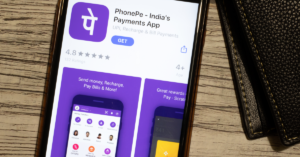We are living in the era of technology that surrounds us everywhere, say sleeping, eating, and drinking. The use of technology is everywhere, and in short, it can be said that we are breathing technology. The most useful innovative technology is the mobile phone and websites. Every day there’s something new and trendy that comes up in the market. So for organizations to cope with the ongoing trends of the market it has become important to stand up to the competition.
A website can be accessed from several locations all over the world. Sometimes it may perform as intended in one geographical area but may not work as desired when accessed from a different location. This happens due to the geographically based tests failing to perform and the errors cannot be detected and fixed prior to the website being launched to be accessed.
App-based organization’s business logic depends on the action based on the location of people and objects. And one of the major concerns for testers is to ensure the safety and security of location-based apps, which are challenging to maintain. So it is a must to perform geolocation testing to ensure that location-based functionalities work fine and also include the must-have ingredients in making such a website a success.
For that, the GPS (Global Positioning System) and IP location of the device must be tested in the “Geographic Location” applications. One of the most critical things is the need to use real equipment to test in many global locations to assure that the application works in all those distant locations.
Let’s understand it in a simple way. We all must be aware of the location button in our mobile apps and “Allow your location” in a desktop browser while accessing a website. It is because the app or a website you’re using is going to use your geolocation. For example – If you need directions to a specific location in Google Map, it will ask you your current location to know your starting point.
But GPS navigation apps are no longer the only app that uses geolocation; in fact, the list of application categories using geolocation is increasing every day. Say it locations, route directions, estimated arrival time, food delivery, e-commerce, games, or social media, most of the apps are coming with location-aware features.
Therefore to help you test location-based features effectively, here are some tips in this article. But before going further let’s understand what geolocation exactly means and why it is important to test.
Geolocation as its name implies is simply a geographical location that is place specification. It is finding the current geographic location of an individual, mobile phone, or computer using an electronic device. The “Near me” query is one of the most common location-based searches that users use for geolocation. For example “hotels near me” or parks near my location etc. Likewise, when a company wants to know where a web or app user is, it uses geolocation data.
Why it is important
Nowadays Geolocation testing is equally important as other types of testing. Because if the app fails to communicate with the user in their language and preferences it would be of no use.
There is a long list of cases where an application depends completely on geolocation and exhibits the importance of geolocation testing. Like fetching results according to the location, restricting and showing content according to the national law, and customizing advertisements. etc.
Geolocation testing ensures that your application is working as intended for users according to their region’s rules. This is done by using GPS and creating a set of geographic coordinates such as latitude and longitude, which are then utilized to determine location.
It is the process of testing all your geolocation-related functionality on the website or mobile application. The functionalities are for example- If you have a traveling application then whether it automatically fetches the current location or not? If yes, then is it the exact location that the device is in? Also whether your app filters out the different places according to the location? If it does, is it the exact location where the place is?
More specifically, geolocation testing also ensures that the application is keeping to the regional laws and gets the most relevant results for the user.
We have understood much about geolocation and why it is important in people’s lives. We can move further with some tips on how to test the geolocation of websites and mobile applications to ensure their functionality in different geographical boundaries without failing.
Use a cloud-based testing platform to test your websites geolocation
The most effective way to perform geolocation testing is to automate your test using cloud-based platforms. For a seamless testing experience organizations have developed a secure website geolocation testing platform over the cloud along with other multiple functionalities and capabilities. LambdaTest is one such platform.
LambdaTest’s geolocation feature offers you to test your application or website and help you in releasing high-quality web and mobile apps to all the users globally.
LambdaTest is a cloud-based cross-browser testing platform that offers an online browser farm of 3000 browsers, real devices, and operating system combinations to test on web browsers online across different geolocations.
It lets you verify how your websites and mobile apps behave in different locations all over the world. It also provides the testers with a secure infrastructure so that they can relax from the security point of view as there are no third-party servers involved.
You just simply access the needed device and simulate your user behavior by entering the location you wish to test by using its geolocation feature that uses IP addresses from different countries. You can also verify scenarios like languages, currencies, and time zones by just adding IP geolocation into your tests
Using a VPN to test the website Geolocation is no wonder
A virtual private network (VPN) can perform as if the system is in a different location by changing its current location. This can be used as far as geolocation testing is concerned. You just have to install and open a VPN, to change location to a specific country and do your testing. But this is only advisable for a smaller project
VPN is not a fully reliable system because sometimes they are super slow in receiving and sending packets to the server. This is because they connect to servers sitting in different countries and get rerouted too many times to the selected location.
Another important thing to consider using VPNs is that they are heavily used among younger generations to change their server location to get access to blocked applications in your country. Therefore, some countries have blocked VPN usage to secure their infrastructure, and by using this you may face a lot of trouble in the complete testing process.
Associating team of people around the world
As geolocation testing requires testing the application on different locations for real, this is very complex. The simplest method would be to connect testers from those locations and hand over your app to them. There are a lot of websites that can help you find testers, like GitHub. Through GitHub, contacted testers will download and test your application from various parts of the world.
But this approach can lead to certain issues like the testers you deal with will be unfamiliar. And providing them with confidential source code without being familiar or ever meeting them. This could possibly be a security leak.
Another thing is that there is nothing to doubt about their excellence, but the fact is that it’s hard to blindly trust those testers that they are doing their work devotedly. To avoid this, you may have to strictly go through the testing process sheets, which will require your time investment.
Conclusion
So finally it can be said that geolocation is actively present in our day-to-day life to fulfill our essential daily tasks. Say it from using the application that tells you about today’s weather to your traveled distance to your destination, geolocation services are used everywhere. Knowing so much about geolocation testing makes your job even more responsible and necessary to test geolocation-based applications correctly and efficiently.










